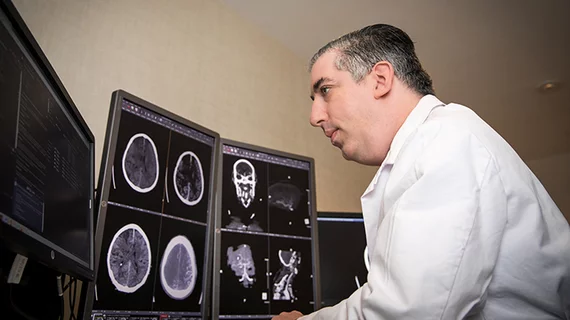Specialists collaborate to implement ‘game changer’ emergency MRI protocol for wake-up stroke
Specialists across radiology, emergency medicine and neurology have collaborated to implement a new MRI protocol those involved are calling a “game changer” for patients.
As many as 27% of acute ischemic strokes occur while an individual is sleeping. This makes it difficult to discern when the blood blockage occurred—crucial information, with providers needing to administer clot-busting treatment within 4.5 hours of the onset of symptoms.
Allegheny Health Network has started using advanced magnetic resonance imaging to determine the age of the stroke. The Pittsburgh-based hospital system said it is one of the only centers in the region using the MRI protocol and has now treated more than 21 wake-up stroke sufferers.
“Until recently, there has been little to offer these patients due to the limitations of [tissue plasminogen activator] without knowing when a stroke began,” Michael Goldberg, MD, director, Division of Neuroradiology, said Sept. 9. “MRI is proving to be a game changer in that respect.”
European researchers first detailed this shift from CT to MRI in what Allegheny Health Network called a “groundbreaking” 2018 study. Goldberg compared the technique to “reading the rings on a tree trunk to learn how old it is.” The American Stroke Association has since adopted such emergent MRI as part of its own national guidelines.
AHN worked to implement new staffing and communication protocols to unite different disciplines and make their program possible.
“The implementation of emergent MRI for wake-up stroke patients is a remarkable example of our expert subspecialized neuroradiologists working collaboratively with their colleagues in stroke neurology and emergency medicine at our comprehensive stroke center to improve the care required for this unique group of stroke patients,” Bethany Casagranda, DO, chair of AHN’s Imaging Institute, said in an announcement.

